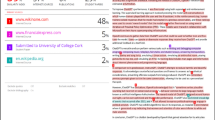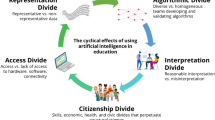Abstract
The goal of this paper is to stress the significance of ethics for engineering education and to illustrate how it can be brought into the mainstream of higher education in a natural way that is integrated with the teaching objectives of enriching the core meaning of engineering. Everyone will agree that the practicing engineer should be virtuous, should be a good colleague, and should use professional understanding for the common good. But these injunctions to virtue do not reach closely enough the ethic of the engineer as engineer, as someone acting in a uniquely engineering situation, and it is to such conditions that I wish to speak through a set of specific examples from recent history. I shall briefly refer to four controversies between engineers. Then, in some detail I shall narrate three historical cases that directly involve the actions of one engineer, and finally I would like to address some common contemporary issues.
The first section, “Engineering Ethics and the History of Innovation” includes four cases involving professional controversy. Each controversy sets two people against each other in disputes over who invented the telegraph, the radio, the automobile, and the airplane. In each dispute, it is possible to identify ethical and unethical behavior or ambiguous ethical behavior that serves as a basis for educational discussion. The first two historical cases described in “Crises and the Engineer” involve the primary closure dam systems in the Netherlands, each one the result of the actions of one engineer. The third tells of an American engineer who took his political boss, a big city mayor, to court over the illegal use of a watershed. The challenges these engineers faced required, in the deepest sense, a commitment to ethical behavior that is unique to engineering and instructive to our students. Finally, the cases in “Professors and Comparative Critical Analysis” illuminate the behavior of engineers in the design of structures and also how professors can make public criticisms of designs that seem wasteful.
Similar content being viewed by others
References
Integrating Ethics into Engineering Education and Practice; Proceedings of the third conference on ‘Ethics and Social Responsibility in Engineering and Technology — Building Ethics into Professionalism (2004) Science and Engineering Ethics 10(2): 201–432.
Journal of Engineering Education (January and April 2005) 94, nos. 1 and 2.
See for example, Drake, Matthew J., et al. (2005) Engineering Ethical Curricula: Assessment and Comparison of Two Approaches. Journal of Engineering Education 94, (2): 223–231.
Billington, David P. (1996) The Innovators: The Pioneering Engineers Who Made America Modern. John Wiley & Sons: Chapter 1.
Billington, David P. and David P. Billington, Jr. (2005) The Innovators II: Engineers and the Launching of the Twentieth Century. Princeton University Press (forthcoming).
Hindle, B. (1981). Emulation and Invention. New York University Press: 85–100.
Lewis, T. (1991) Empire of the Air: The Men Who Made Radio. Edward Burlingame Books: 189–204. See also Tucker, D.G. (Feb 1972) The History of Positive Feedback: The Oscillating Audion, The Regenerative Circuit, and Other Applications up to around 1923,” The Radio and Electronic Engineer 42 (2): 69–80.
Greenleaf, W. (1961) Monopoly on Wheels: Henry Ford and the Selden Automobile Patent. Debroit: Wayne State University Press.
Crouch, T. (1987) The Feud between the Wright Brothers and the Smithsonian. American Heritage of Invention and Technology 2(3): 34–46.
Lingsma, J. S. (1966) Gids voor de deltawerken. Rotterdam: 1–15, 16–26.
Gibson, K. (1970) The Civil Engineer in Elected Office. Proceedings, First National Conference on Civil Engineering History, Heritage and the Humanities, Vol. I: 12–20.
Billington, David P. (1983) The Tower and the Bridge: The New Art of Structural Engineering, Basic Books, (Princeton Univ. Press, paperback, 1985): 3–24, 163–170.
Billington, David P. (Oct 1973). “Art in Engineering — The Need for a New Criticism”, Engineering Issues (American Society of Civil Engineers): 499–511.
(Aug 1977) History and Esthetics in Suspension Bridges. Journal of the Structural Division, American Society of Civil Engineers 103, No. ST8.
Newberry, B. (2004) The Dilemma of Ethics in Engineering Education. Science and Engineering Ethics 10(2): 343–351.
(1994) The New Art of Structural Engineering: An Introductory Course in Structures. Structural Engineering International 4(3): 187–189.
Billington, David P. (1983) The Acts in Technology.” Anglican Theological Review 65(1): 31–48.
Klett and Hummel (1938). Die Donaubrűcke bei Leipheim im Zuge der Reichsautobahn Stuttgart-Műnchen. Die Bautechnik_40/41: 521–535.
Maillart, R. (1938) Ueber Eisenbeton-Brücken mit Rippenbögen unter Mitwikung des Aufbaues. SBZ 112(24): 289.
Collins, G. The Discovery of Maillart as Artist. Maillart Papers, Second National Conference on Civil Engineering: 54.
Billington, David P. (1979) Robert Maillart’s Bridges: The Art of Engineering. Princeton University Press (Paperback 1985): 118–121.
Author information
Authors and Affiliations
Corresponding author
Additional information
This paper was the keynote address at the 2005 conference, Ethics and Social Responsibility in Engineering and Technology, Linking Workplace Ethics and Education, co-hosted by Gonzaga University and Loyola Marymount University, Los Angeles, California, USA, 9–10 June 2005.
Rights and permissions
About this article
Cite this article
Billington, D.P. Teaching ethics in engineering education through historical analysis. SCI ENG ETHICS 12, 205–222 (2006). https://doi.org/10.1007/s11948-006-0021-z
Issue Date:
DOI: https://doi.org/10.1007/s11948-006-0021-z




